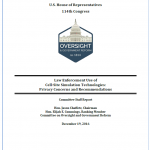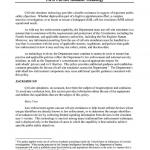
Advances in emerging surveillance technologies like cell-site simulators – devices which transform a cell phone into a real-time tracking device – require careful evaluation to ensure their use is consistent with the protections afforded under the First and Fourth Amendments to the U.S. Constitution. The United States’ military and intelligence agencies have developed robust and sophisticated surveillance technologies for deployment in defense against threats from foreign actors. These technologies are essential to keeping America safe. Increasingly though, domestic law enforcement at the federal, state, and local levels are using surveillance technologies in their every-day crime-fighting activities. In the case of cell-site simulators, this technology is being used to investigate a wide range of criminal activity, from human trafficking to narcotics trafficking, as well as kidnapping, and to assist in the apprehension of dangerous and violent fugitives.

